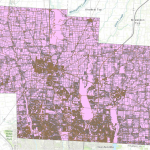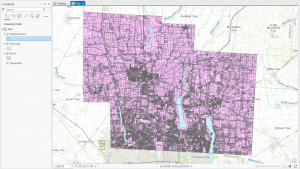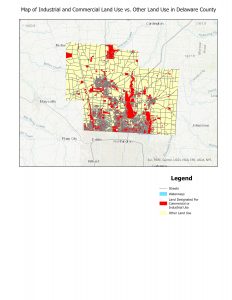
Marzulli Week 2
Chapter 1- This chapter introduced me to using ArcOnline, which was a different experience compared to what I had learned in Geog 291. At first, I was able to follow along easily, but as I got further into the chapter, I ran into challenges when working with data layers. One of the biggest issues was figuring out how to properly format my data so that it would display correctly on the map. I had to go back and double-check my work multiple times before it finally looked right.
Another part that I found difficult was understanding how to adjust the symbology settings to better represent the data. I wanted to make the map more visually clear, but I struggled to find the right colors and symbols that would best display the information. After experimenting with different options, I started to get the hang of it. I realized how important these small details are in making a map both informative and easy to read.
Chapter 2- Going into this chapter, I was feeling more confident, and overall, things went more smoothly. One of the first tasks was working with attribute tables, which I found really helpful in organizing and understanding the data. Being able to filter and sort information within the table made it much easier to see patterns in the dataset.
A challenge I faced in this chapter was trying to properly configure labels for the map. I wanted certain features to stand out, but some of the labels were either too small or overlapping in a way that made the map look cluttered. After adjusting the settings multiple times, I was finally able to make the labels clear and readable.
By the end of the chapter, I felt a lot more comfortable with these tools, and I started to see how all the different elements—layers, symbols, labels, and attribute tables—come together to create an effective map. I’m looking forward to applying what I learned to more complex projects in the future.
Marzulli Week 3
Chapter 4 is about mapping density, which is useful when analyzing areas of different sizes. Density maps help show patterns rather than individual points or connections. There are two main ways to create a density map. The first method is by using defined areas. This is a quick and easy way to display data that has already been summarized. However, it’s not the most detailed method since it doesn’t come directly from raw data. If extra detail isn’t necessary, this method is a great way to visualize patterns. The second method is by using a density surface. This approach is more detailed but requires a lot more data input since it doesn’t use pre-summarized data. It looks similar to raster models because it uses layers and cells. It’s also possible to switch between the two methods by assigning values to summarized maps. Factors like cell size, search radius, calculation methods, and units impact how the final map looks.
Chapter 5 focuses on taking a closer look at maps to understand how different features, values, and layers work together. It also revisits the idea of discrete versus continuous values. Discrete values are unique and identifiable, like locations or addresses. Continuous values can be numerical or categorical, but they vary across an area.
This chapter also explains different ways to study areas and features. One way is by looking at the overall areas and features, which gives a quick visual representation but doesn’t provide specific data points. Another way is by selecting inside an area, which gives precise information about that space but doesn’t help with anything outside of it. Lastly, overlaying methods combine multiple layers of data to create a more detailed view. This method is useful but requires a lot of data input.
There are also different ways to display maps. One option is using lines and locations, which uses thick lines and dots to mark specific places. Another option is discrete areas, which map distinct features like buildings or rivers using lines or shading.
Chapter 6 begins by discussing the difference between mapping by distance versus cost. Distance mapping is usually enough, but it’s not always the most detailed option. Cost mapping considers travel expenses and effort, making it more precise but also more complex. This fits with a common theme in the book: more detailed methods require more data and effort.
The chapter also introduces planar and geodesic mapping. Planar mapping assumes the Earth is flat, which works for small areas. However, for larger areas, geodesic mapping is needed to account for the Earth’s curvature.
Different methods can be used to analyze distance within a map. District bands help compare distance with other characteristics, while inclusive rings show how totals increase as distance grows
Creating buffers is another important concept. Buffers define boundaries around values, helping to highlight edges and centers. The rest of the chapter focuses on how to apply these methods in real-world mapping. I’m curious to see how all of this will come together when we start working through tutorials and applying what we’ve learned.
Fondran Week 2
Chapter 1:
This chapter had similarities to what I did in Geog 291 but was different since it is applied to ArcOnline. I started strong but quickly got confused when trying to upload the Redlands data. As I continued, I was able to familiarize myself with each of the tools and discovered there is a lot you can do. I think this chapter was well explained but lacked some necessary pictures I felt I needed to better understand what I was doing. As I navigated through 1.4 I ran into another issue, I was unable to complete step 11, I could not find the “select layer field or sort by”. Anytime I clicked where it would be, it disappeared. I reviewed other students’ maps in our organization, and mine did not resemble theirs, but I tried.
Chapter 2:
I started this chapter with excitement and optimism that it would go better than the first chapter. This went a lot smoother, and I was able to successfully create a hosted feature layer using geocoding. In 2.3 it was asked to configure pop-ups, something I struggled with previously. I enjoyed this part because it made the map easier to understand and more useful than before. While creating my story I could not find the “Map Action” button and could only find the “media action” one. I also could not find the “swipe” button when adding it to my sidecar. I ended up finding it but put it in the story separate to the sidecar narrative. I have mad a story before but doing it a second time I feel much more confident in my ability to create my own.
Applications:
I have lived and gone to school in many different places including Stuttgart, Germany because of my dads different job placements while serving in the Coast Guard. Each location and school I went to varies and I could make a heat map that measures the amount of time I attended each school. Where a warm color would represent a longer time stayed and color tones would be short times. I possible could couple this with an express map, that would allow me to place arrows and annotations to explain each area.
Heumasse Week 8 Final
Posted in Drive
Heumasse Week 7
Address Point: Represents all certified addresses in Delaware County. These addresses are
updated daily, with updates published monthly.
Annexation: Tracks annexations and boundary changes in Delaware County since 1853. Here,
annexation simply refers to territorial adjustments.
Building Outline: Contains outlines and structures of all buildings in Delaware County. The
most recent update was in 2023.
Condo: Includes all condominium polygons within Delaware County.
Farm Lot: Identifies farm lots within both the U.S. Military and Virginia Military Survey
Districts.
GPS: Contains all GPS monuments established in 1991 and 1997.
MSAG (Master Street Address Guide): Used for defining political jurisdictions in townships,
cities, and villages throughout the county.
Map Sheet: Represents all map sheets within Delaware County.
Hydrology: Maps all major waterways, rivers, and streams within Delaware County, enhanced
using LiDAR data.
Municipality: Contains data on all municipalities within Delaware County.
Original Township: Displays the original township boundaries before tax districts altered their
shapes.
Precinct: Contains data on voting precincts within Delaware County, sourced from the Board of
Elections.
Recorded Document: Includes recorded documents from the Delaware County Recorder’s Plat
Books, Cabinet/Slides, and Instrument Records that are not represented by active subdivision
plats. Used for tracking miscellaneous records in the county.
School District: Shows the boundaries of school districts within Delaware County.
Street Centerline: Represents the center of pavement for public and private roads in Delaware
County. This dataset was developed using address information.
Subdivision: Contains subdivision and condominium records for Delaware County.
Survey: Includes shapefiles of point coverage representing land surveys within the county.
Tax District: Defines tax districts as determined by the Delaware County Auditor’s Real Estate
Office.

Fondran Week 7
Address point- Contains all valid addresses in Delaware County and is updated frequently
Annexations- All the annexations updated on an as-needed basis in DelCo and is updated monthly
Building Outline- Building outlines for all structures in Delaware County, Ohio, and was last updated in 2023
Condo- All condominium units in DelCo
Dedicated ROW- all lines that are designated Right-of-Way it is updated daily and published monthly
Delaware County E911 Data- this layer is intended to provide emergency services with information needed to comply with Phase II 911 requirements. It provides the capablity to find the closest valid adress through reverse geocoding.
Farm Lot- All farm lots in US Military and Virginia Military Survey Districts of Delaware County. It is updated on an as needed basis.
GPS- all GPS monuments that were established in 1991 and 1997 and is updated as needed
Hydrology- Contains all major waterways in DelCo and is updated as needed
MSAG (Master Street Address Guide)- Includes the 28 different political jurisdictions in DelCo
Map Sheet- All Map sheets in Delco
Municipality- All the municipalities in DelCo
Original Township-Original boundaries for townships prior to tax district changes
Parcel-includes all cadastral parcel lines in DelCo and is updated monthly
Precinct- Includes all voting precincts in DelCo and is published as needed by the DelCo Board of Elections
Recorded Document- Includes points of recorded documents in the Delaware County Recorder’s Plat Books, Cabinet/Slides and Instruments Records
School district- Includes all school districts in DelCo and is updated monthly
Street Centerline- Includes all pavements of public and private roads in DelCo and is updated daily and published monthly
Subdivision- Includes all subdivisions and condos in DelCo and is published monthly
Survey-point coverage that represents surveys of land in DelCo
Tax District- All Tax districts in DelCo and is updated as needed
PLSS-created to facilitate in identifying all of the PLSS and their boundaries in both US Military and Virginia Military Survey Districts of DelCo.
Zip code- Contains all of the zip codes in DelCo and is updated on an as-needed basis
Township- Contains the 19 townships in DelCo and is updated on a as needed basis

Jolliff Week 7
PLSS– Consists of Public Land Survey System (PLSS) polygons. it was created to work in identifying all of the PLSS and their boundaries in the US Military and Virginia Military survey districts.
Address point-spatially accurate representation of all certified addresses within Delaware County. they indicate the location of the building centroid.
Annexation– Contains Delaware County’s annexations and conforming boundaries from 1853 to present. Up dated as needed.
Building Outline 2023– Building outlines for all structures in Delaware Ohio. was updated in 2023
Condo– Condominium polygons in Delaware that have been recorded through the Delaware County Recorders Office.
Delaware County E91 1 Data– Spatially accurate representation of all certified addresses within Delaware County. maintained by the Delaware County Auditors office. supports appraisal mapping, 911 Emergency Response, accident reporting, geo-coding, and disaster management.
GPS-Identifies GPS monuments that were established in 1991 and 1997.
MSAG– Master Street Address Guide polygon is a set of 28 different political jurisdictions such as the townships, cities and villages that make up Delaware County.
Municipality– all municipalities that are in Delaware , Ohio.
Parcel– Polygons that represent all cadastral parcel lines within Delaware County Ohio. Maintained by the Delaware County Auditors Office.
Precinct-Voting Precincts within Delaware County Ohio. Maintained by the Delaware County Auditor’s GIS Office under the direction of the Delaware County Board of Elections.
Recorded Document-Represents recorded documents in the Delaware County Recorder’s Plat Books, Cabinet/ Slides and Instruments Records. not represented by subdivision plats that are active.
School District– All school districts within Delaware County , Ohio. Created by the Delaware County Auditor’s parcel records.
Street Center line-Shows and depicts the center of pavement of public and private roads within Delaware County.
Subdivision-Subdivisions and Condos recorded in the Delaware County Recorder’s Office.
Survey-a shape file of a point coverage that shows surveys of land in Delaware County. They are found in documents in the Recorder’s office and the Map Department.
Tax district-All tax districts in Delaware County. data is defined by the Delaware County Auditor’s Real Estate Office. Dissolved on the tax District Code.

Week 8 Fry Final
Making New Shape Files from Existing Shapefiles

The first application I chose to execute on this final was to find two related datasets within the pre existing dataset, and export them into a separate map. To do this, I first put the hydrology, Street Centerlines, and the parcel data set shapefiles for Delaware County into my new project in ArcGIS Pro. Then, I decided that I wanted to isolate the land used for commercial and industrial purposes because this land is privatized and non-residential, which means they are very similar land uses that can be combined in a map to better understand the land use of the county. I thought this map could be useful for residents and experts when looking at the zoning of the county and where the commercial and industrial lands are located.
In order to create this map I had to create a separate shapefile for this layer of the combined industrial and commercial land in the county. To accomplish this, I had to first open the attribute table of the parcel layer. Then, I chose select by attributes, and chose the data points–polygons–that had a class number beginning with 3 (for industrial uses) or 4 (for commercial uses). After that, I had to right click the layer in the contents pane and choose data, then export selected data. This created an export shapefile that I was able to put into a map over top of the other parcel layer and added the hydrology and street centerlines layers to provide the context for the rest of this map. Specifically the streetlines are helpful for this because you can see what the transportation around all of the properties zoned for industrial and commercial use is like, and how the land use compares to the density of the streets.
I then created a new layout, put in this map, and zoomed to the most recent active map view. I manipulated the symbology of the layers to be most readable and to have good contrast. Next, I continued to spruce up the presentation of the map by changing the layer names to more presentable versions of their meanings, and adding a legend of the symbology I used on each layer. Finally, I added my title and exported the layout as a jpeg.
Mapping Change

The second application I chose for the knowledge of ArcGIS Pro I gained during this course was mapping the change of subdivisions in Delaware County since the beginning of its settlement in the 1800s. First I imported the shapefiles for the street centerlines, hydrology, and subdivisions data sets. Then I changed the symbology of the subdivisions layer to graduated colors. I had to organize it by the field: REC_DATE, which was the date of the construction of those subdivisions in the form YYYYMMDD. I set the upper bound of each section to the first day of the year for the corresponding year, and noticed that no subdivisions were from before 1800. Then I changed the colors of the symbology to be easily distinguishable. Next, I removed all the outlines of these polygons to allow for easy viewability from the larger frame of the map. Finally, I created a layout and took all the same steps as with the first map to make the layout presentable and understandable for the reader.
